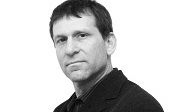Architect and contractor Adam Kushner to speak on his attempt to build the world’s first 3D-printed estate
 The Hudson Valley Advanced Manufacturing Center (HVAMC) will welcome New York City-based architect and contractor Adam Kushner of Kushner Studios NYC to campus on Friday, Nov. 21, for a lecture titled, “Sand Castles: 3D printing leaves the desktop and prints a house.” This event is free and open to the public.
The Hudson Valley Advanced Manufacturing Center (HVAMC) will welcome New York City-based architect and contractor Adam Kushner of Kushner Studios NYC to campus on Friday, Nov. 21, for a lecture titled, “Sand Castles: 3D printing leaves the desktop and prints a house.” This event is free and open to the public.
The lecture will provide a brief introduction to the world of full scale 3D-printing and Kushner’s attempt to build the world’s first 3D-printed estate.
Kushner, who founded Kushner Studios in 1994, holds a bachelor’s degree in architecture from Rensselaer Polytechnic Institute. He has taught at Pratt Institute in the Graduate School of Architecture, as an adjunct professor at NJIT and NYIT, and as a design studio instructor at Cornell University.
Click here to read more about Kushner’s plans and how is construction progressing.
About New Paltz’s 3D Printing Initiative
Since launching the Hudson Valley Advanced Manufacturing Center in spring 2013, the College’s effort to fuse learning and manufacturing, science and the arts has continued to gain momentum. In February 2014, the College partnered with Brooklyn, N.Y. – based MakerBot, the leading manufacturer of desktop 3D printers, to open the nation’s first MakerBot Innovation Center at SUNY New Paltz. The 3D Printing Initiative received additional funding in fall 2014, including a $10 million NYSUNY 2020 Challenge Grant to help establish an Engineering Innovation Hub and $850,000 in capital funding for a new 3D Printing Laboratory. In December 2013, the Mid-Hudson Regional Economic Development Council and Governor Andrew Cuomo awarded the College $1M in state economic development funds. Currently, the HVAMC is providing digital design and fabrication expertise to about 50 businesses and entrepreneurs throughout the region. The Center also engages the local community and educates the public about the possibilities of 3D printing. Workshops for K-12 educators have attracted a wide variety of teachers, from art to science, who have an interest in digital design and fabrication and are utilizing these new technologies in their classrooms.

